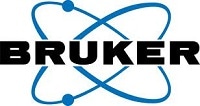TLC (thin layer chromatography) is a popular method used to separate chemical mixtures. Often when TLC is used for separations each individual spot on the plate must be scraped off, extracted from the stationary medium and then analyzed, e.g. by mass spectrometry.
To bypass these time-consuming steps TLC-MALDI has been developed, which allows direct MS measurements to be taken from the TLC plates.
The majority of analyses carried out so far have been for bio-related chemicals such as lipids. This article will explore using TLC-MALDI to analyze industrial materials.
| Keywords |
Instrumentation and Software |
| Industrial materials |
ultrafleXtreme |
| Thin Layer Chromatography |
solariX |
| Oil additives |
TLC-MALDI |
| |
fleximaging |
Methods
The model sample used was the charge transport materials (CTM) found in the organic photo conductor (OPC) drum of laser printers. The mixture to be analyzed contained six different CTMs (Figure 1) and another OPC material, titanyl phthalocyanine (TiOPC). The compounds were dissolved in THF to make a solution and applied to a TLC plate, which was then ran in 2D.
MS analysis was carried out using Bruker’s ultrafleXtreme MALDI-TOF MS. Data capture was automated for both 1D and 2D analysis using dedicated software, with fleximaging used for the 2D analysis. The results for each are displayed in their respective viewers.
In addition, 1D-TLC-MALDI was used to compare fresh engine oil with engine oil that had been used for three months. Following this MALDI-FT-ICR MS (SolariX, Bruker) was used for a more in-depth analysis.
.jpg)
Figure 1. Molecular structures of components in CTM-mix
Results
Figure 2 shows a MS image of the CTM-mix following 2D TLC, it shows that the different solution components have successfully separated and formed their own TLC spots.
.png)
Figure 2. MS image of CTM-mix developed two dimensionally on TLC plate
Figure 3a shows a MS spectrum of the CTM-mix prior to separation via TLC. It can be observed that the mass signal from CTM-6 is interfering with another component (a broad peak at m/z 408, which is supposed to correspond to a meta-stable fragment). Figure 3b demonstrates that TLC separation can be used for the clear detection of CTM-6, free from interference.
.jpg)
Figure 3. CTM-mix before separation (A) and CTM-6 spot on TLC plate (B)
Figure 4 is the 1D MS spectrum for the mixture of CTMs, shown in the TLC-MALDI viewer. The m/z is plotted on the x-axis and the number of spectra, which relates to the position (and therefore Rf value) of the TLC spot, is plotted on the y-axis. The intensity of the MS peak is expressed by the color intensity. In this instance every component of the mixture, including CTM-6, has been fully separated.
.jpg)
Figure 4. Result from one dimensional MS measurement of CTM-mix developed one dimensionally on TLC plate
In general MS images are simple to interpret, however the collection of the data can be time-consuming when a large TLC plate is used; sometimes taking a couple of hours. 1D TLC analysis using TLC-MALDI takes less time than conventional analyses and the unique data viewing system allows interesting features to be picked out, e.g. spots relating to byproducts or impurities. This is because the method shows every mass signal present, whereas MS imaging will only show pre-specified masses.
In addition, automotive engine oils before and after 3 months use were compared with TLC-MALDI by 1D development and MS measurement (Figure 5). It was essential to use 2,5-dihydroxy benzoic acid (DHB) as a matrix, which was different from CTM samples that could be ionized without matrix.
.jpg)
Figure 5. TLC-MALDI of engine oil before (A) and after (B) 3 months use
The TLC plates were coated in DHB by dipping, followed by drying with a hairdryer as specified in Bruker’s Dip Coating Protocol. Following TLC separation, it was possible to identify some of the components present in the oil with noticeable differences between the new and used samples, indicating some components are lost during the oils use.
Engine oils tend to consist of a base oil and additional additives. The base oil is a hydrocarbon mixture, which is very difficult to ionize using MALDI, meaning the components detected by TLC are the additives. The high mass resolution and accuracy of the MALDI-FT-ICR MS was used to compare the new and used oil sample spots, in order to determine their elemental and chemical identities.
Figure 6 is the MS/MS spectrum for the TLC spot marked with a yellow circle in Figure 5. The precursor mass was used to calculate an elemental composition of C39H81N and the mass difference between the fragment ion (C13H26) and the precursor allowed the compound to be identified as tritridecylamine.
.jpg)
Figure 6. FT-ICR MS/MS from a TLC spot shown with yellow circle in Figure 5
Summary
2D TLC-MALDI (MS imaging) is best for capturing intuitive results, whereas 1D analysis is best for detailed results. Deciding what type of analysis needs to be carried out and the level of detail required is an important step.
FT-ICR MS is an extremely powerful technique for both TLC-MALDI and for sample prep in regular MALDI. The instrument is designed in such a way that sample surface height does not impact its function.
Conclusions
- TLC-MALDI is a simple technique to carry out which avoids having to scrape and extract each spot from TLC plates
- TLC-MALDI can be used for the analysis of industrial materials and mixtures
- MALDI-FT ICR MS is favorable for in-depth analysis and MALDI-TOF MS for screening
Acknowledgment
Produced from materials originally authored by Toshiji Kudo; Yoshihiko Morishita; Noriyuki Iwasaki; Takashi Nirasawa from Bruker Life Sciences Mass Spectrometry. Yokohama, Japan.

This information has been sourced, reviewed and adapted from materials provided by Bruker Life Sciences Mass Spectrometry.
For more information on this source, please visit Bruker Life Sciences Mass Spectrometry.